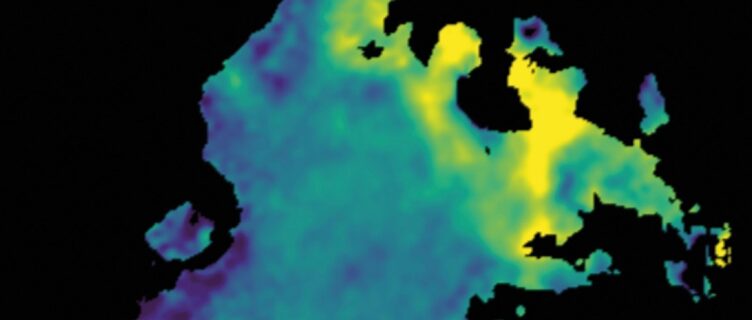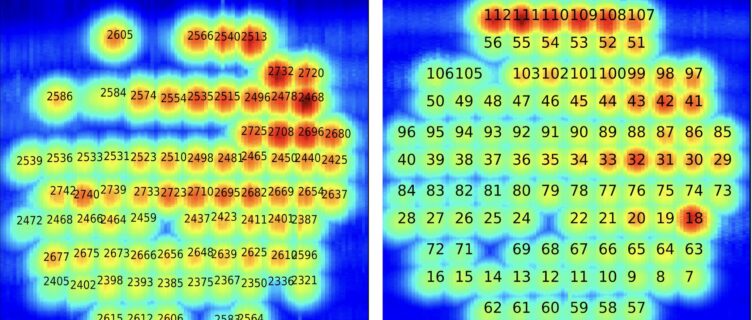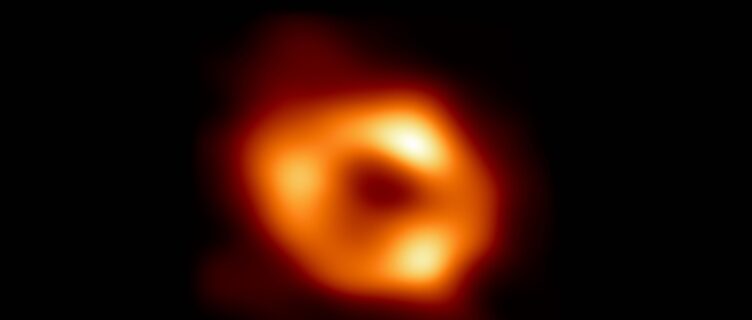A recent study led by researchers at Chalmers University of Technology and IRAM has revealed a crucial transition step in the evolution of clusters of galaxies, from a phase of vibrant, gas-rich metropolises to a phase of ghost towns full of old stars. A two-step observational approach of a wide-area survey followed by deep spectroscopic observations using the Northern Extended Millimetre Array (NOEMA), disclosed the transitory phase of a star-forming to a gas-depleted collection of galaxies over ten billion years ago.
The structure of the Universe is formed from minute density fluctuations that we can still see in the afterglow of the Big Bang. The majority of stars that formed in the first three billion years are predicted to lie in these high-density peaks, as dark matter and gas are rapidly funnelled into these regions. However, this surplus of energy in a small volume puts an early end to the party, and in the local Universe, we see these clusters as regions with massive but passive galaxies. For all their importance in a coherent picture of cosmological evolution, these cosmic overdensities are hard to find, and even harder to confirm and study in detail.
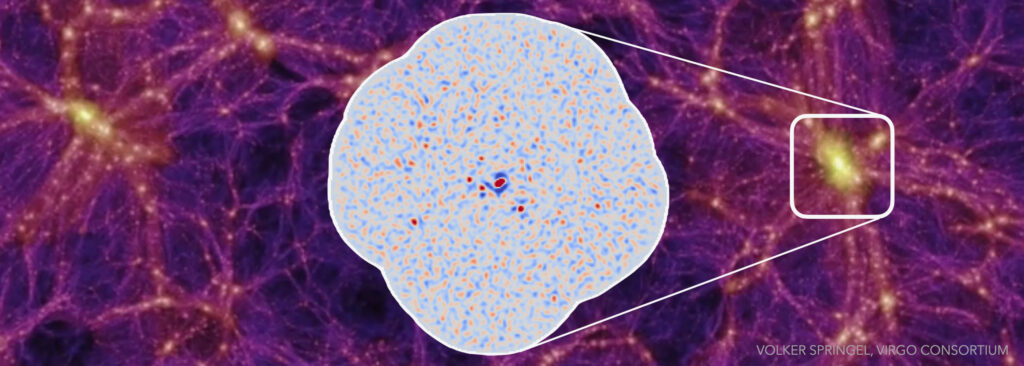
The structure of the Universe emerges from small density fluctuations left over from the Big Bang. At the highest-density regions, many galaxies form as part of a cluster. To study these environments, large-area survey instruments such as SCUBA-2 allow us to map the most massive and star-forming galaxies in these structures. Credits: Volker Springel, Virgo Consortium, Bakx et al. 2024.
As part of a deep and narrow NOEMA survey to find the cosmological distances of dusty star-bursting galaxies, one source in particular stood out as a galaxy in the centre of an expansive cosmic web, HerBS-70. “We had initial suspicions about the presence of a cosmic overdensity of galaxies around HerBS-70” says Dr. Tom Bakx, the lead researcher on this project based at Chalmers University of Technology, Sweden, “since NOEMA imaging had revealed multiple galaxies within just half a million light-years from one another. The brightest, central source also has a supermassive black hole that seems to be swallowing large volumes of gas, which is a strong predictor of galaxies at the heart of clusters in formation.”
The first step for the research team to confirm the cluster suspicion was to use a type of observation that excels at identifying the most star-forming systems within a large area: a sub-mm camera called SCUBA-2 mounted on the James Clerk Maxwell Telescope (JCMT). SCUBA-2’s bolometers — tiny heat-sensitive detectors — can trace the long-wavelength emission from dust of massive star-forming galaxies across a huge 20 by 20 million light-year area of the sky. This is about the expected size of clusters in formation, and twenty-one likely candidates were found in the field of HerBS-70. However, these observations did not allow the scientists to discern the galaxies that are part of the primordial cluster from those that just happen to lie along the same line-of-sight.
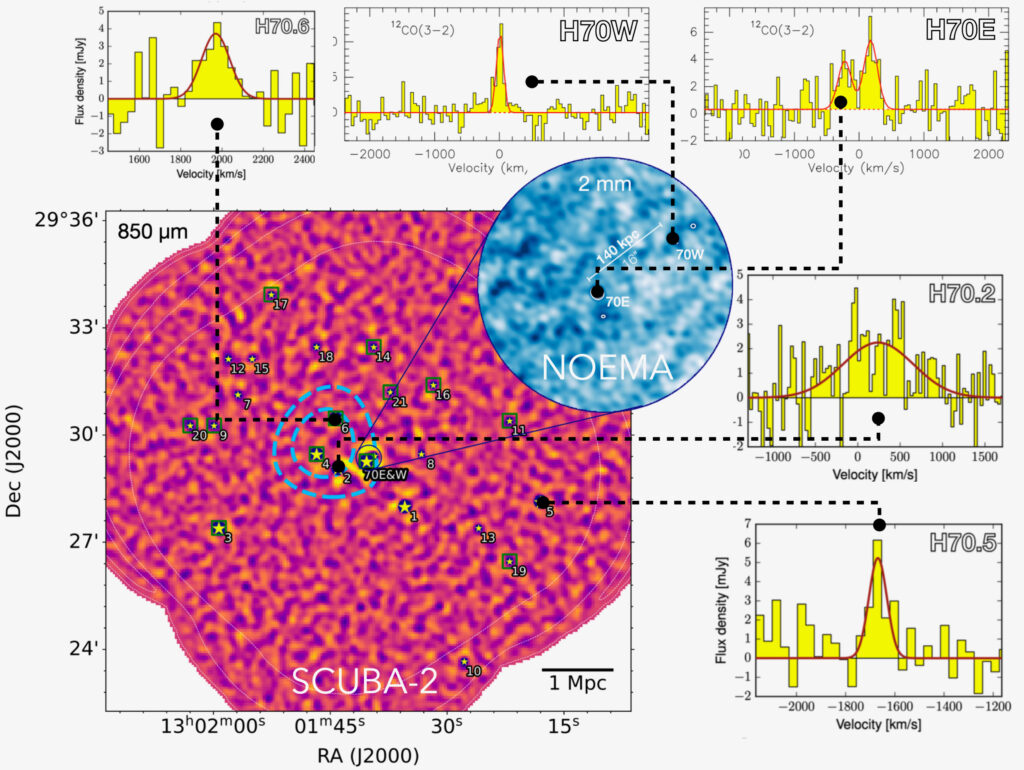
Combined observations with SCUBA-2 and NOEMA identify five dusty star-forming galaxies as part of a primordial cluster, centered around the bright HerBS-70 galaxy. The gas in these five sources appears to be running out in this cluster in formation, pinpointing a predicted but hard-to-find phase in cluster evolution. Credits: IRAM, Neri, Bakx.
Uniquely, NOEMA can confirm these dusty blips by looking for the spectral lines emitted by the molecular or atomic gas, and its antennas identified three out of the nine targeted galaxies to be true members of the primordial cluster. However, the amount of gas in these galaxies fell much below what is expected from ordinary, non-cluster galaxies, particularly those in the early Universe. The researchers conclude that this system is thus rapidly working through the little gas that remains, and is on its way to be like the clusters in the local Universe – as massive as the famous Virgo cluster, but also just as passive.
These results show the power of combined observations, using the strengths of sub-mm cameras to map large areas of the sky and of interferometers, like the NOEMA array, to pinpoint the exact galaxies that form part of the cluster. “It is important to realise that these observations can only find the dustiest monsters”, explains Stefano Berta, researcher at IRAM. “In the future, we are looking to provide a complete perspective of the galaxies in this system with other facilities, such as optical and long-wavelength radio telescopes, to uncover the effects of this cluster on lower-mass galaxies and exactly what role the central supermassive black hole has in shaping clusters in this crucial transitory time.”
More information
Original article: A dusty proto-cluster surrounding the binary galaxy HerBS-70 at z = 2.3, Bakx et al. 2024, published in Monthly Notices of the Royal Astronomical Society.
Scientific contacts
Tom Bakx, Chalmers University of Technology, Sweden, tom.bakx@chalmers.se
Stefano Berta, IRAM, France, berta@iram.fr
Our latest updates
Explore all the latest news from our research and technology groups and never miss out on important upcoming events.



